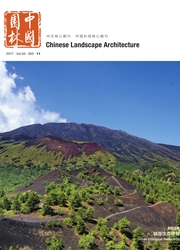

 中文摘要:
中文摘要:
随着世界自然保护理念的转变,中国自然保护地的保护机制也从排斥社区的消极保护模式逐步向社区参与的积极保护模式转变。选择福建武夷山、四川九寨沟、宁夏云雾山、吉林敬信、青海甘达和江西渔潭6个案例,通过比较研究,从组织体系、保护内容和保障制度3个方面解析案例形成的6类社区参与保护模式,即社区共管、社区参与管理、协议保护、保护地友好体系、社区保护地,以及自然保护小区。模式的共同点是以社区为主体,循序渐进地引导社区参与保护;不同点在于引导方式、协调机构和保障制度的差异。在中国国家公园体制改革背景下,从法制建设、资金保障、引导方式和文化建设等方面对自然保护地社区参与机制提出建议对策。
 英文摘要:
英文摘要:
With the transformation of the concept of nature protection around the world,the protection mechanism of protected areas in China has also changed from the negative protection mode of community rejection to the positive conservation mode of community participation.Six categories of community participation models in the protection of protected areas are selected to be comparatively studied in the paper,including Community Co-management,Community Participation Management,Agreement Protection,Protected Area Friendly System,Community Conservation Area and Nature Small Reserve.The model analysis is carried out from three aspects:organization system,project content and safeguard system.It is concluded that the commonality is the step-by-step model to guide the community to participate in the protection with communities being the main role,and the difference lies in the way of guidance,coordination agencies and security system.This paper puts forward some suggestions on the community participation mechanism in protected areas from four aspects of legal system,financial safeguard,guidance and cultural development under the background of China's national park system reform.
 同期刊论文项目
同期刊论文项目
 同项目期刊论文
同项目期刊论文
 期刊信息
期刊信息
